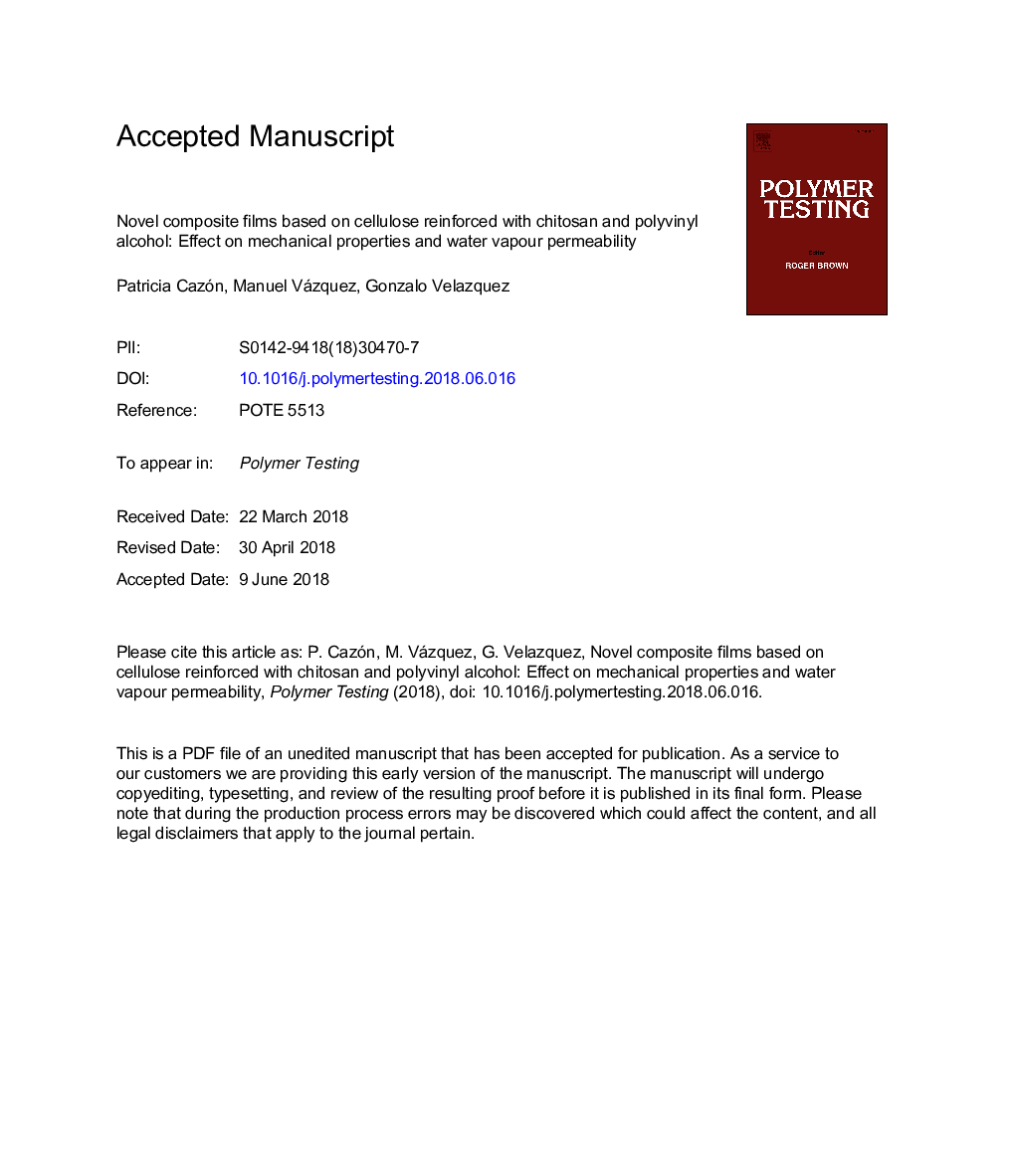| کد مقاله | کد نشریه | سال انتشار | مقاله انگلیسی | نسخه تمام متن |
|---|---|---|---|---|
| 7824892 | 1502921 | 2018 | 37 صفحه PDF | دانلود رایگان |
عنوان انگلیسی مقاله ISI
Novel composite films based on cellulose reinforced with chitosan and polyvinyl alcohol: Effect on mechanical properties and water vapour permeability
ترجمه فارسی عنوان
فیلم های کامپوزیتی رمان بر پایه سلولز تقویت شده با کیتوزان و پی وی سی پی وی سی: اثر خواص مکانیکی و نفوذ پذیری بخار آب
دانلود مقاله + سفارش ترجمه
دانلود مقاله ISI انگلیسی
رایگان برای ایرانیان
کلمات کلیدی
سلولز بازسازی شده استحکام کششی، ازدیاد طول در نقطه شکستن، مدول یانگ، نفوذپذیری بخار آب،
موضوعات مرتبط
مهندسی و علوم پایه
شیمی
شیمی آلی
چکیده انگلیسی
Novel composite films were prepared by dissolving microcrystalline cellulose (3-5% w/w) in NaOH/urea solution, followed by coagulation in acetic acid solution. The regenerated cellulose films were immersed in chitosan-polyvinyl alcohol solutions at concentrations of 0-1% w/w and 0-4% w/w, respectively. Tensile strength, percentage of elongation at break, Young's modulus and water vapour permeability were measured to assess the effect of each compound on the mechanical and barrier properties. Polynomial models were obtained to evaluate the effect of the formulation on the measured properties. The microstructure was analysed by scanning electron microscopy. Results showed tensile strength values in the range 27.75-78.48â¯MPa, similar to usual synthetic polymer films. Percentage of elongation at break ranged from 0.98 to 12.82%, increasing when polyvinyl alcohol and chitosan increased. Young's modulus ranged from 2727.04 to 4217.25â¯MPa, showing higher values than pure chitosan and polyvinyl alcohol films. The highest value was reached combining cellulose and polyvinyl alcohol without chitosan. The water vapour permeability (1.78·10â11-4.24·10â11â¯g/mâ¯sâ¯Pa) showed 2 orders of magnitude higher than that of synthetic polymers, but lower than pure chitosan and polyvinyl alcohol films. Results showed that it is feasible to obtain cellulose-chitosan-polyvinyl alcohol composite films with improved mechanical properties and water vapour permeability.
ناشر
Database: Elsevier - ScienceDirect (ساینس دایرکت)
Journal: Polymer Testing - Volume 69, August 2018, Pages 536-544
Journal: Polymer Testing - Volume 69, August 2018, Pages 536-544
نویسندگان
Patricia Cazón, Manuel Vázquez, Gonzalo Velazquez,
